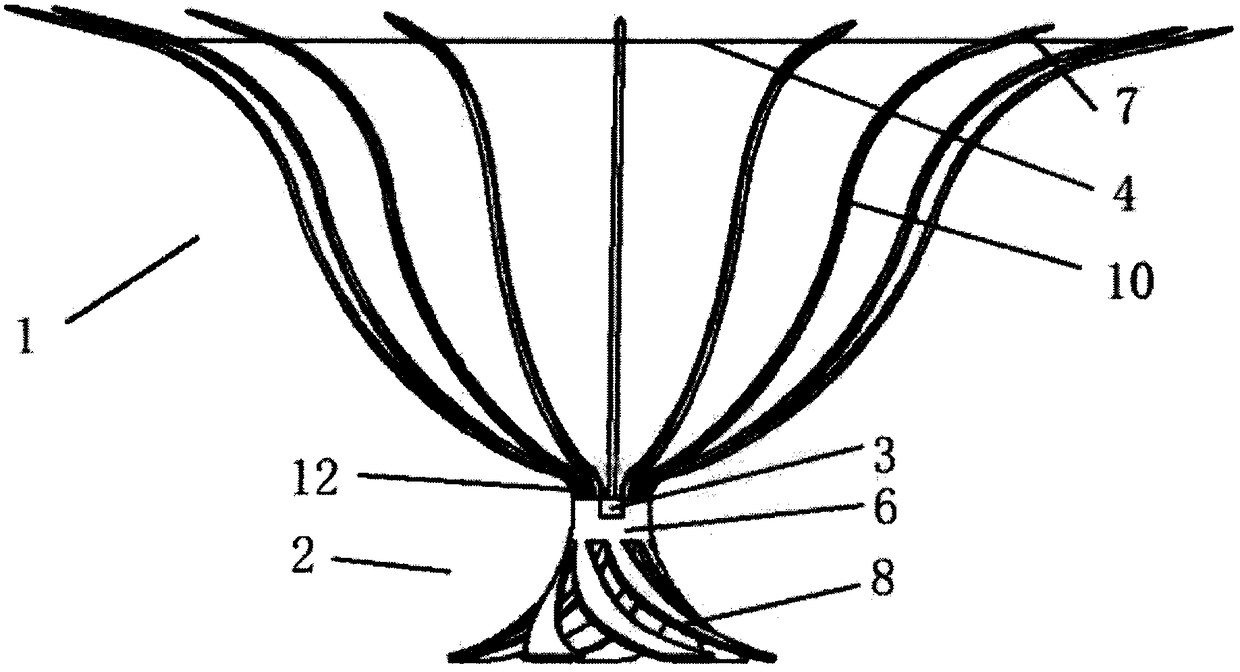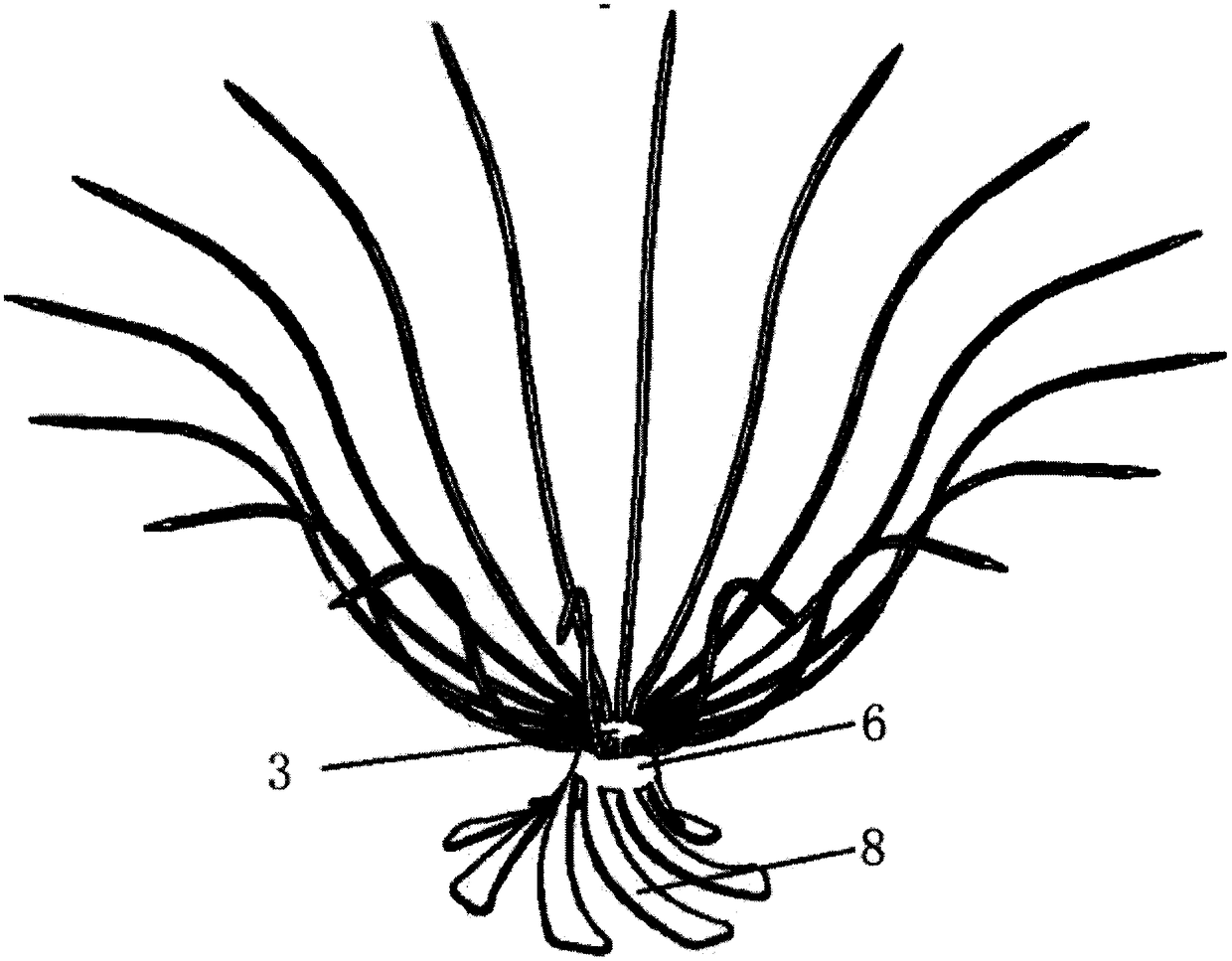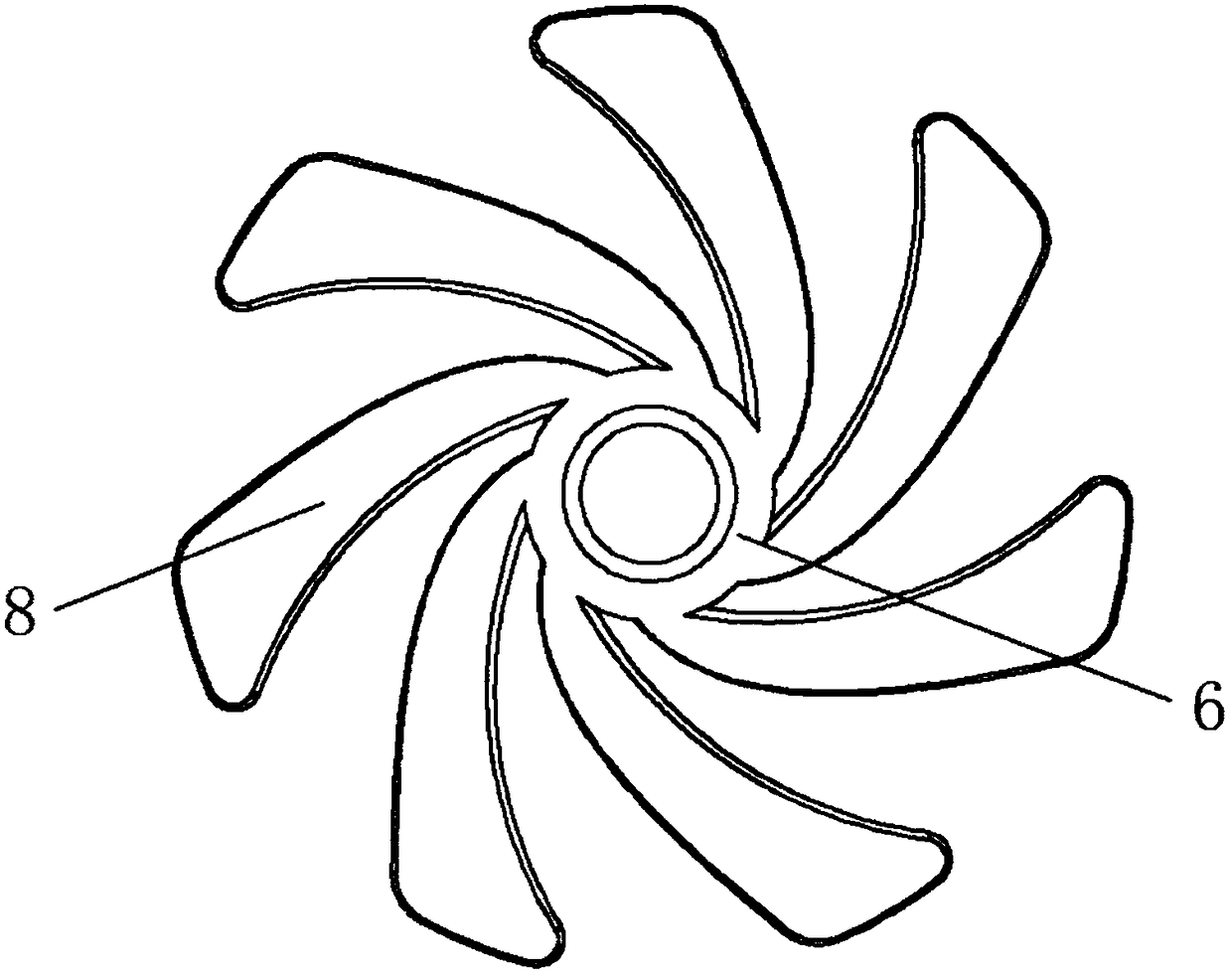A left ventricular volume reduction mechanism
A technology for the left ventricle and apex of the heart, applied in the fields of heart valves, medical science, surgery, etc., can solve the problems of inconvenient system introduction, affecting the quality of life of patients, increasing blood vessel and heart trauma, etc., to reduce the risk of fatigue fracture of the mechanism, and achieve a good three-dimensional Spatial vision and the effect of improving mechanical stability
- Summary
- Abstract
- Description
- Claims
- Application Information
AI Technical Summary
Problems solved by technology
Method used
Image
Examples
Embodiment 1
[0055] Such as Figures 1 to 4 As shown, a left ventricular volume reduction mechanism includes a support frame 1 and a base 2 connected to the support frame 1; the support frame 1 includes a plurality of support rods 10 that are adaptively expanded away from the apex 5, and the plurality of support rods 10 are The proximal ends of the support rods 10 are merged together to form a gathered bottom end 12, and the distal ends of the support rods 10 are provided with anchors 7. When the support frame 1 is released in the left ventricle 9, the support rods 10 are adaptively close to the inner wall of the ventricle , the anchor thorn 7 pierces the inner wall of the ventricle to anchor the left ventricular volume reduction mechanism; the base 2 includes a central end 6 connected to the gathered bottom end 12, and extends from the central end 6 toward the apex A plurality of helical branches 8, the plurality of helical branches 8 are rotationally symmetrical along the central axis of...
Embodiment 2
[0064] Such as Figure 5 and Figure 6 As shown, on the basis of embodiment 1, the difference between embodiment 2 and embodiment 1 is that the end of the helical branch 8 near the apex 5 is provided with a crimp 81, in one embodiment, the crimp 81 is that the proximal end of the helical branch 8 extends smoothly and then curls into a closed circle or hook shape toward the axial direction of the base 2 . The crimp 81 abuts against the inner wall of the apex 5 . This design has many advantages, including: it is convenient for the mechanism to be easily pushed out from the delivery sheath tube to prevent hanging the inner wall of the sheath; the visualization during the operation is enhanced, and it is convenient for positioning judgment when the mechanism is released; after the mechanism is released in the left ventricle 9, both It can be smoothly adapted to the inner wall of the apex 5, and can also reduce the torsion force generated by the twisting movement of the heart on ...
Embodiment 3
[0067] Such as Figure 7 As shown, on the basis of Embodiment 1, the difference between Embodiment 3 and Embodiment 1 is that the proximal end of the helical branch 8 is provided with a ball head 82. This design has many advantages, including: Easily push out from the delivery sheath to prevent the inner wall of the sheath from hanging; enhance the visualization during the operation, and facilitate the positioning judgment when the mechanism is released; after the mechanism is released in the left ventricle 9, it can be smoothly adapted to the inner wall of the apex 5, or Reduce the torsion force generated by the heart torsion movement on the mechanism, prevent the mechanism from shifting, and reduce side leakage and other complications. In addition, a through hole 88 can be set in the ball head 82, such as Figure 8 As shown in the partial cross-sectional view A of , the through hole 88 is used to pass through the series member 86 .
PUM
 Login to View More
Login to View More Abstract
Description
Claims
Application Information
 Login to View More
Login to View More - R&D
- Intellectual Property
- Life Sciences
- Materials
- Tech Scout
- Unparalleled Data Quality
- Higher Quality Content
- 60% Fewer Hallucinations
Browse by: Latest US Patents, China's latest patents, Technical Efficacy Thesaurus, Application Domain, Technology Topic, Popular Technical Reports.
© 2025 PatSnap. All rights reserved.Legal|Privacy policy|Modern Slavery Act Transparency Statement|Sitemap|About US| Contact US: help@patsnap.com



